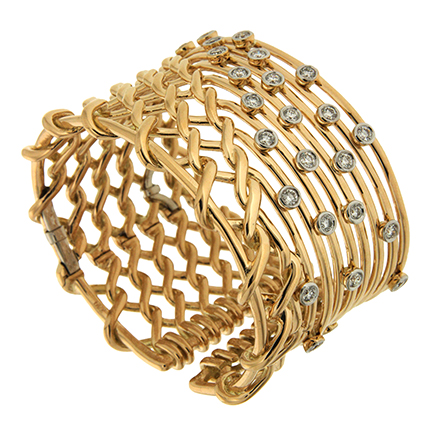Gold is a pretty metal whose physical qualities make it almost ideal for diamond rings. However, it’s quite soft. To give gold strength while preserving its other properties, it’s mixed with other materials. Exact recipes vary; the level of gold in these alloys are measured with karat.
 Twenty-four karat is the purest type of gold. Other numbers indicate how much gold out of twenty-four an alloy has. Twenty karat has twenty parts gold to four parts other, nine karat has nine parts gold, and so on. The most common karats used for fine jewelry is fourteen and eighteen.
Twenty-four karat is the purest type of gold. Other numbers indicate how much gold out of twenty-four an alloy has. Twenty karat has twenty parts gold to four parts other, nine karat has nine parts gold, and so on. The most common karats used for fine jewelry is fourteen and eighteen.
Gold is quite malleable. When compressed, it stretches rather than breaks. One gram can be hammered into a square meter. It’s also ductile, allowing it to stretch into wires. These traits help create beautiful gold wedding bands. When blended with other metals, there should be enough hardness to prevent dents and other damage. At the same time, gold should remain easy to shape.
Some gold alloy combinations change the metals’ color. Copper turns gold to pink or red, depending on the amount. Adding palladium or a mixture of nickel and zinc creates a silvery white. White gold engagement rings are popular for their neutral tones. Depending on the design, gold of two or more colors are used on the same ring.
Other precious metals may also be alloyed for strength. Their blends are measured not by karat, but purity, percentage or other terms. For example, platinum is mixed with things like palladium or copper. On diamond bands, a popular recipe is 5% ruthenium and 95% platinum. As with gold, these rings are described by their precious metal rather than the complete mixture.





